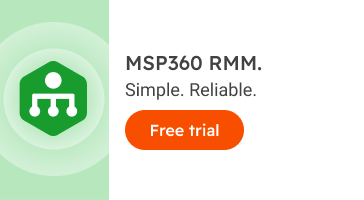MSP Business
How to Choose Patch Management Tools for Your Organization
Installing patches and updates across a large IT environment can be a challenging task. Fortunately, a variety of patch management tools exist to help with the process. Keep reading for tips on what to expect from a patch management tool, as well as what to consider when selecting a tool.
Core Patch Management Tool Features
Any patch management tool worth its salt delivers the following basic features.
Patch Scanning and Vulnerability Discovery
Tools should automate the process of scanning your IT estate for systems that are in need of patches. They should also help you match available patches with systems that the patches apply to. And they should help you detect when patches were not installed properly.
Compatibility and Integration
Most patch management tools are compatible with a variety of systems and configurations. You should expect your tool to be able to install patches for different operating systems, applications, infrastructure and so on.
Likewise, the tools should integrate with other IT management software you may use, such as reporting and auditing platforms that help keep track of the state of your environment.
Automation
Although it's sometimes necessary to install patches manually, patch management tools should provide the option of automating as much of the patch discovery, scheduling and deployment process as possible.
Further reading Guide to IT Process Automation
Testing
Ideally, your patch management solution will offer the ability to test patch installation within a testing environment, so that you can do a dry run before deploying patches to production systems. The tool should be able to automate the testing process and make an automated determination of whether the test completed successfully as well.
Simple Administration
Patch management tools should be easy to administer via a single, user-friendly interface. They should also offer customization options for tailoring the interface and workflows to your needs.
Reporting and Notifications
Keeping track of which patches you have installed is a key part of patch management. Patch management solutions should allow you to generate reports on patch status and vulnerabilities related to unpatched issues. In addition to being important for internal review, these reports may also be necessary for compliance purposes.
In addition, look for tools that will generate alerts or notifications about critical patches that need to be installed or failed patch installations.
Other Considerations
Beyond assessing the key areas of functionality described above, you may also wish to consider the following factors when selecting a patch management tool.
Price
Consider both the direct, upfront cost of the tool and any indirect expenses associated with maintaining it. Factor in any costs required to host the tool on your own infrastructure, too, and training costs that may apply if your staff require education in using the tool.
Simplicity of Deployment
Patch management tools vary with regard to their installation and deployment processes. Ideally, you'll find a suitable tool that offers fast installation, and that doesn't cause any system downtime during the process.
Vendor Support
How easy is it to get vendor support for the tool? What are the vendor's support hours, and how quickly does the vendor respond to queries? Are any third-party support channels available? When something goes wrong with the tool, you'll need answers to questions like these.
RMM Tool Integration
Patch management functionality is often included within the feature set of remote monitoring and management (RMM) tools. If you need RMM capabilities as well, try patch management with MSP360 RMM that provides built-in patch management support and helps you make your operations more efficient, simple and reliable.
Conclusion
All patch management tools do the same basic job: They help to streamline the processes of identifying, deploying and monitoring patches and updates. To deliver the greatest value, though, tools should provide these features in a highly automated and customizable way, while also offering user-friendly administration and easy integration with the rest of your IT management suite.


